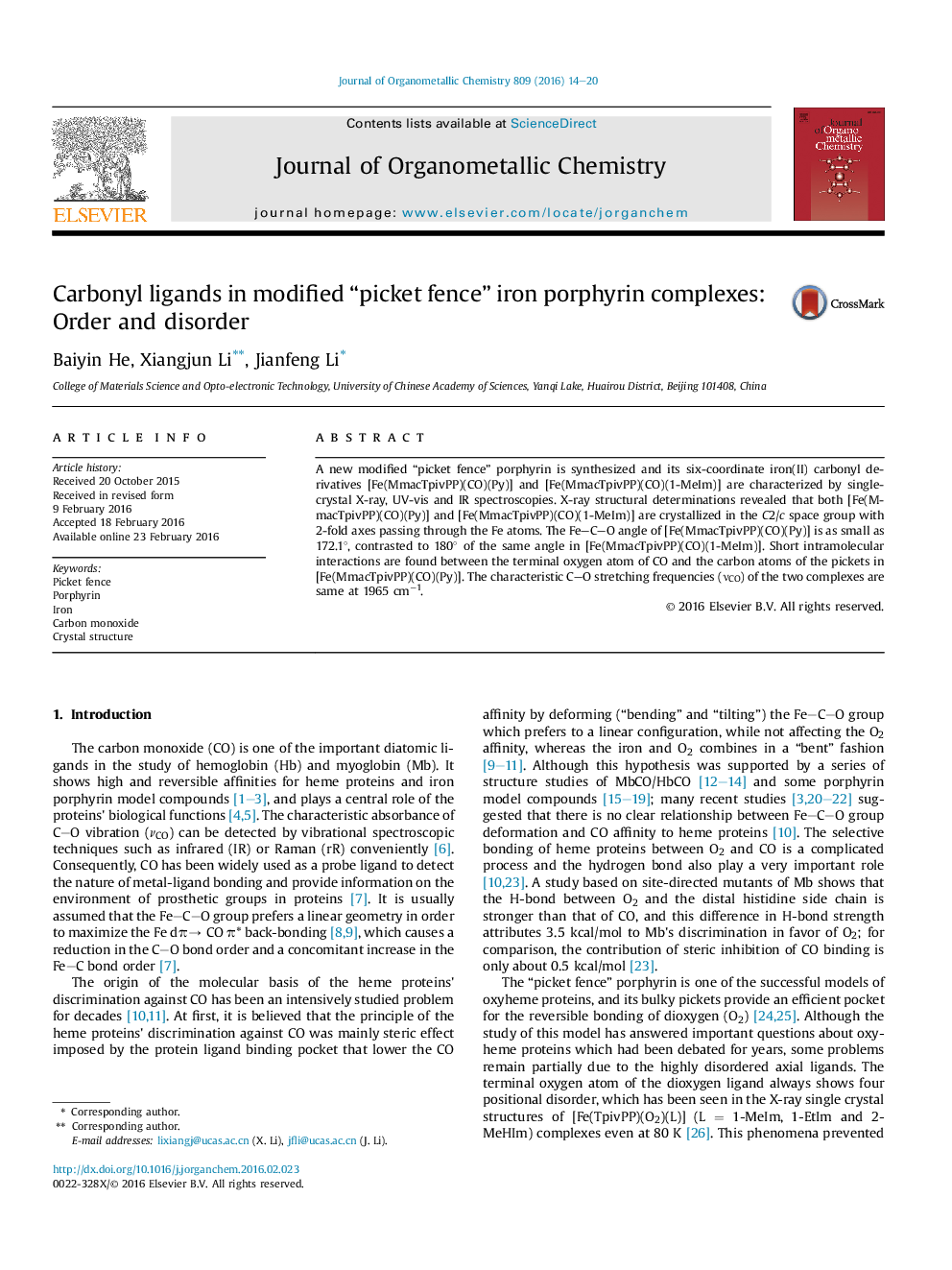| Article ID | Journal | Published Year | Pages | File Type |
|---|---|---|---|---|
| 1321857 | Journal of Organometallic Chemistry | 2016 | 7 Pages |
•Modified “picket fence” porphyrin and iron carbonyl derivatives are synthesized.•The smallest FeCO angle of 172.10(13)° is a result of the rare carbonyl disorder.•Interactions found between terminal oxygen of CO and carbon atoms of the pickets.
A new modified “picket fence” porphyrin is synthesized and its six-coordinate iron(II) carbonyl derivatives [Fe(MmacTpivPP)(CO)(Py)] and [Fe(MmacTpivPP)(CO)(1-MeIm)] are characterized by single-crystal X-ray, UV-vis and IR spectroscopies. X-ray structural determinations revealed that both [Fe(MmacTpivPP)(CO)(Py)] and [Fe(MmacTpivPP)(CO)(1-MeIm)] are crystallized in the C2/c space group with 2-fold axes passing through the Fe atoms. The FeCO angle of [Fe(MmacTpivPP)(CO)(Py)] is as small as 172.1°, contrasted to 180° of the same angle in [Fe(MmacTpivPP)(CO)(1-MeIm)]. Short intramolecular interactions are found between the terminal oxygen atom of CO and the carbon atoms of the pickets in [Fe(MmacTpivPP)(CO)(Py)]. The characteristic CO stretching frequencies (νCO) of the two complexes are same at 1965 cm−1.
Graphical abstractIron(II) porphyrin complexes [Fe(MmacTpivPP)(CO)(Py)] and [Fe(MmacTpivPP)(CO)(1-MeIm)] were characterized. The smallest FeCO angle of 172.10(13)° is observed in the structure of [Fe(MmacTpivPP)(CO)(Py)], which is a result of the rare carbonyl disorder and attributed to the intramolecular interactions between the terminal oxygen atom of CO and carbon atoms of the pickets.Figure optionsDownload full-size imageDownload as PowerPoint slide
